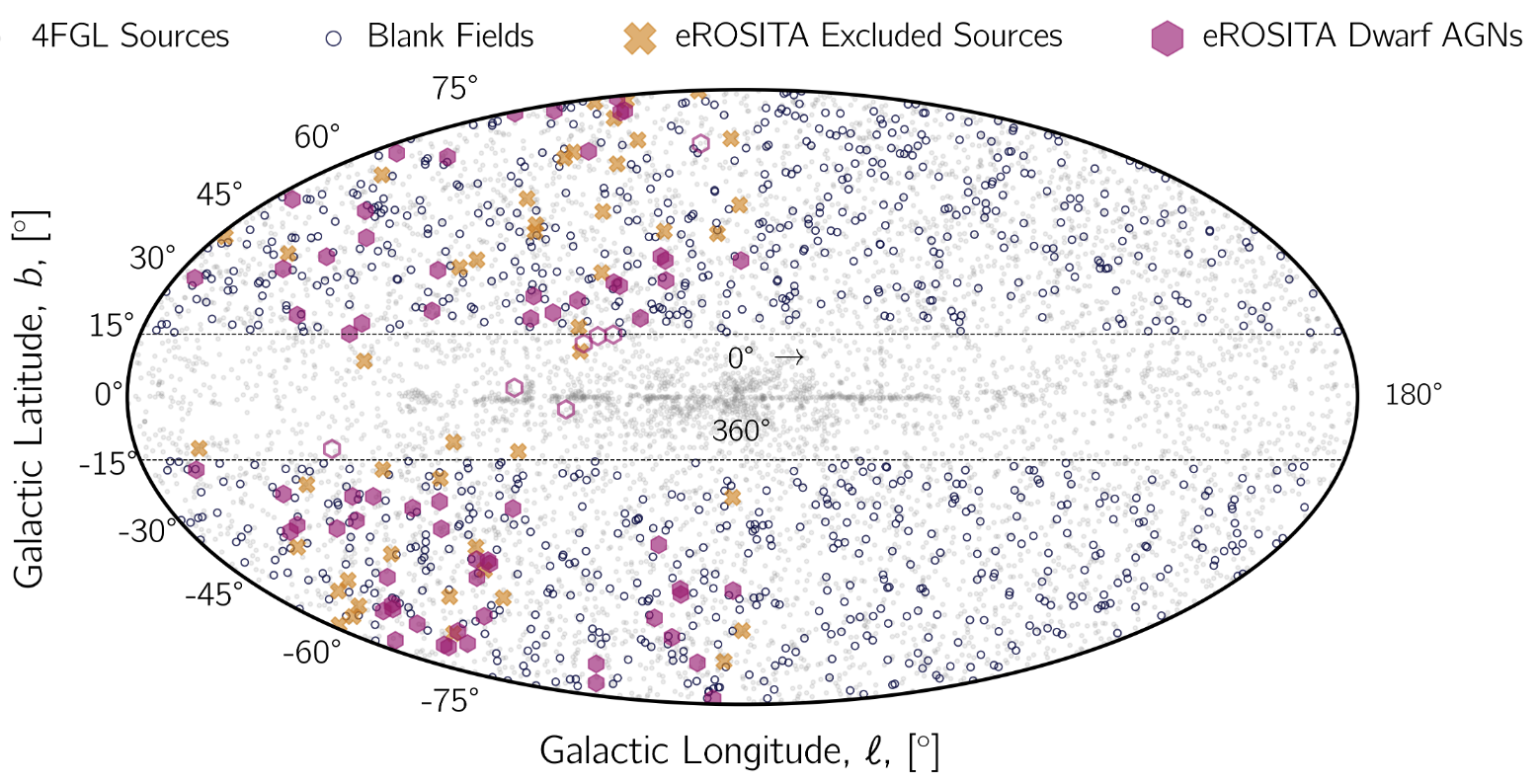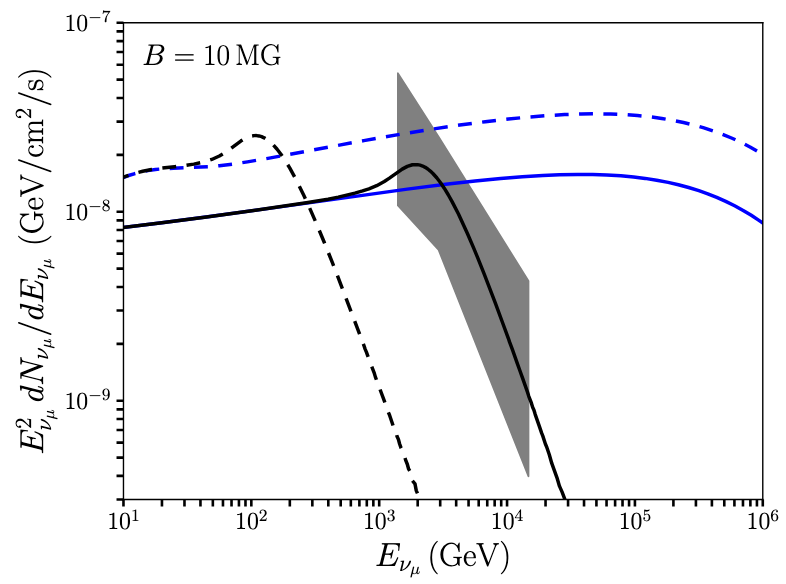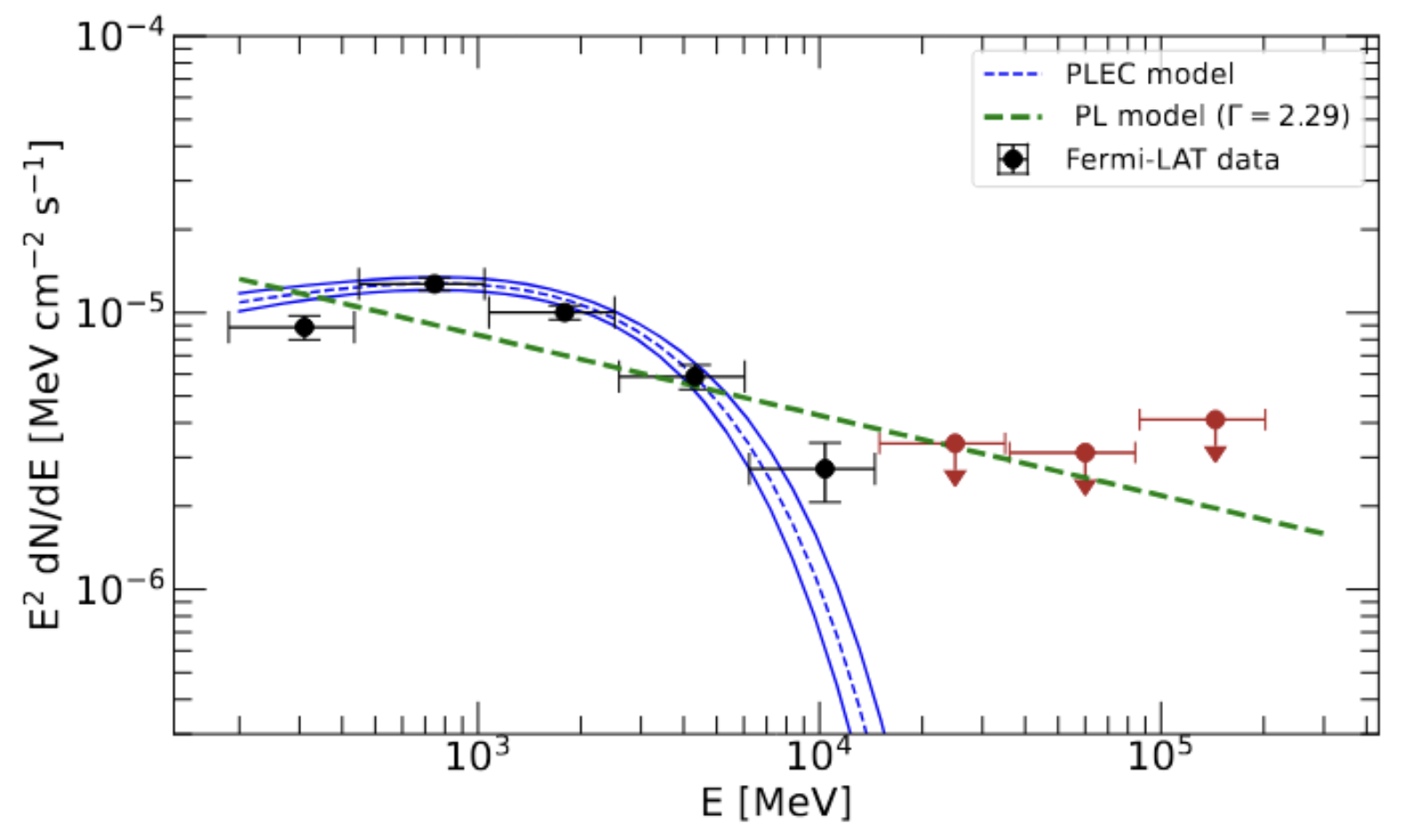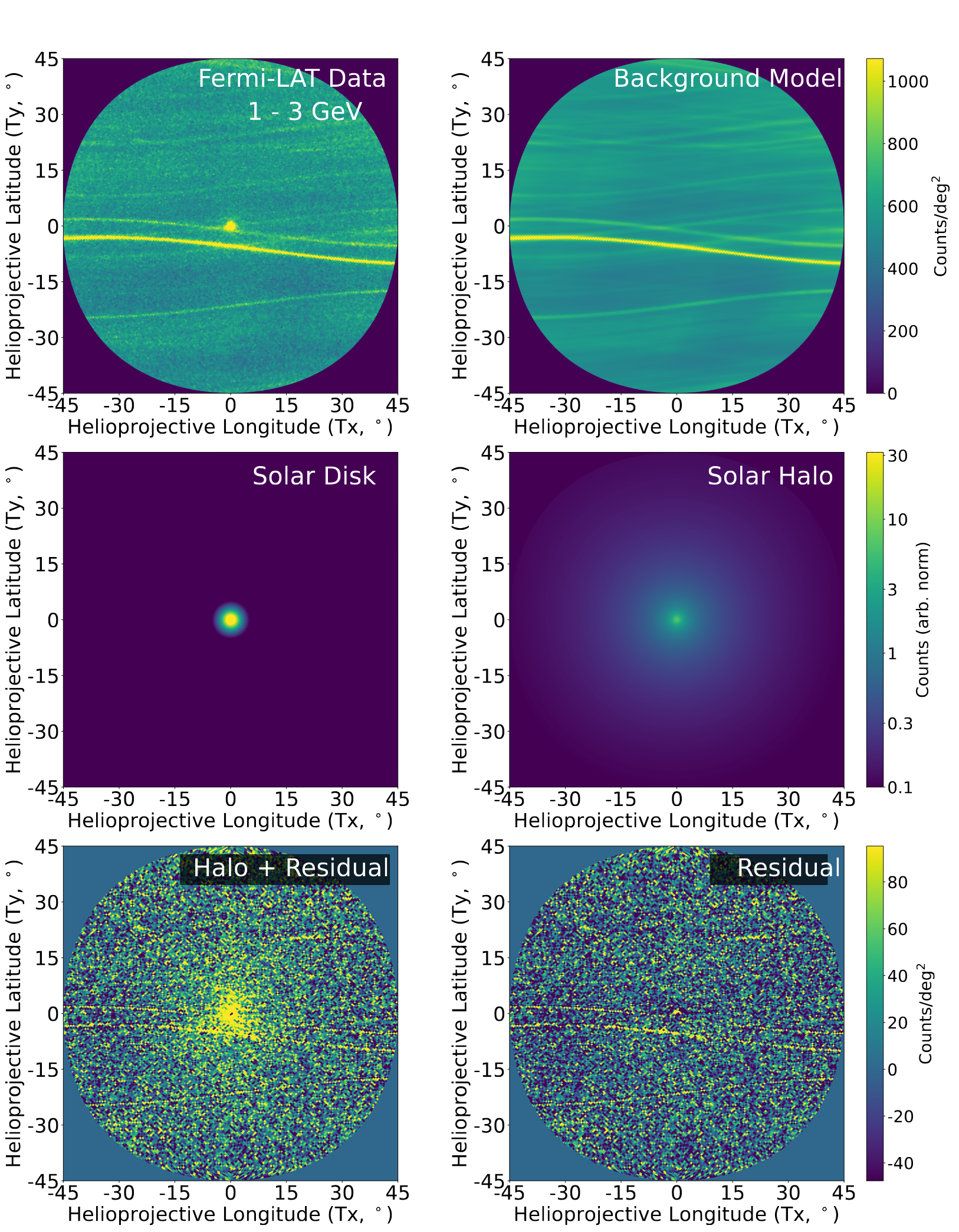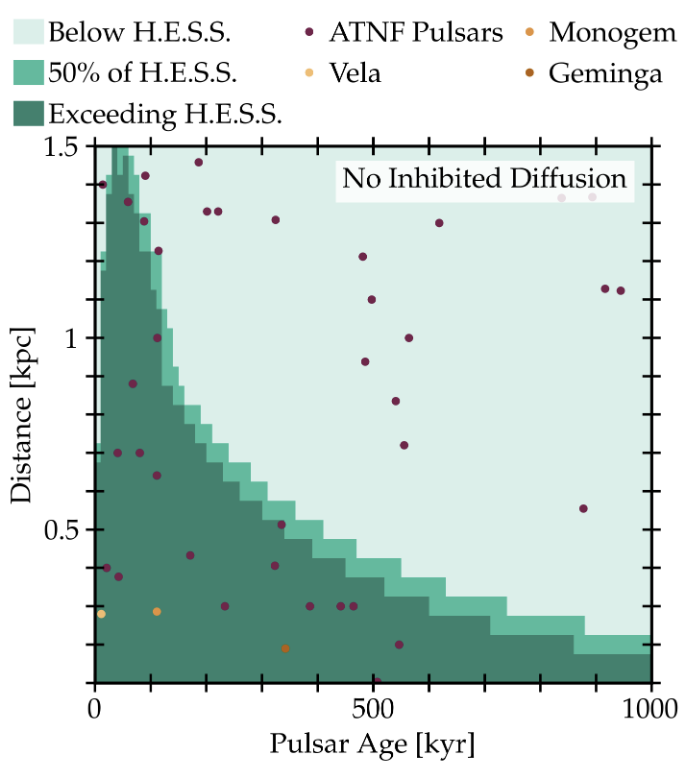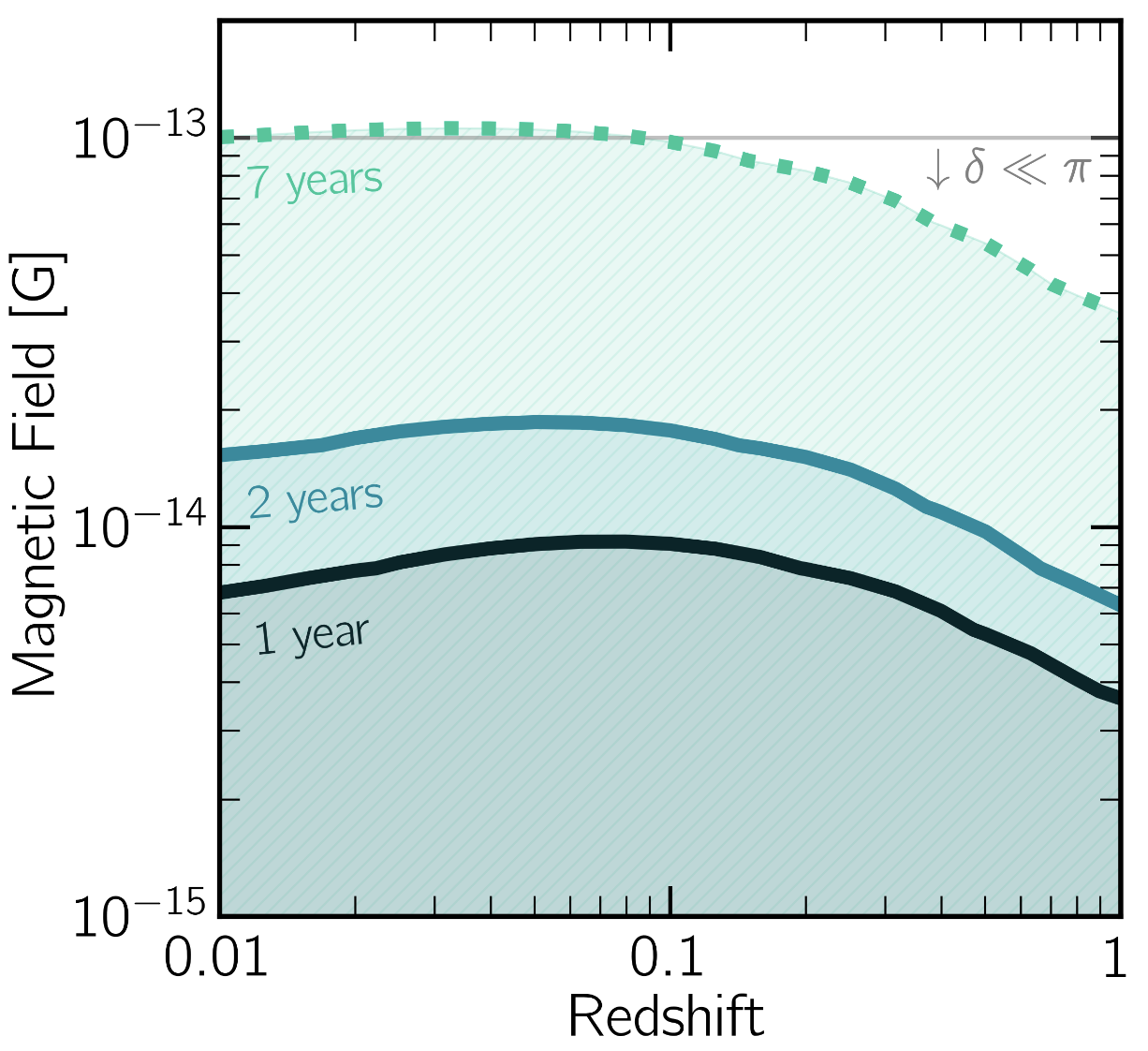77. Are X-Ray Detected Active Galactic Nuclei in Dwarf Galaxies Gamma-Ray Bright?
Milena Crnogorčević, Tim Linden, Annika Peter
To Be Submitted
76. The Impact of Muon and Pion Cooling on the Neutrino Spectrum of NGC 1068
Carlos Blanco, Dan Hooper, Tim Linden, Elena Pinetti
To Be Submitted
75. Explosive Dispersal Outflows as a New Class of Fermi Gamma-Ray Sources: The Case of DR21
Paarmita Pandey, Stephen Lenker, Laura Lopez, Anna Rosen, Tim Linden, Todd Thompson, Stellar Offner, Katie Auchettl, Chris Hirata
To Be Submitted
74. INTEGRAL, eROSITA and Voyager Constraints on Light Bosonic Dark Matter: ALPs, Dark Photons, Scalars, B−L and Li−Lj Vectors
Thong Nguyen, Pedro de la Torre Luque, Isabelle John, Shyam Balaji, Pierluca Carenza, Tim Linden
To Be Submitted
73. First Observations of Solar Halo Gamma Rays Over a Full Solar Cycle
Tim Linden, Jung-Tsung Li, Bei Zhou, Isabelle John, Milena Crnogorčević, Annika Peter, John Beacom
Accepted By PRD
72. Every Nearby Energetic Pulsar Is Surrounded by a Region of Inhibited Diffusion
Isabelle John, Tim Linden
To Be Submitted
71. Looking for the γ-Ray Cascades of the KM3-230213A Neutrino Source
Milena Crnogorčević, Carlos Blanco, Tim Linden
Journal of Cosmology and Astroparticle Physics 10 (2025) 009
70. Super-Kamiokande Strongly Constrains Leptophilic Dark Matter Capture in the Sun
Thong Nguyen, Tim Linden, Pierluca Carenza, Axel Widmark
To Be Submitted
69. Gamma-Ray Observations of Galaxy Clusters Strongly Constrain Dark Matter Annihilation in Prompt Cusps
Milena Crnogorčević, Sten Delos, Nadia Kuritzén, Tim Linden
To Be Submitted
68. Heavy Axions Can Disrupt Gamma-Ray Bursts
Oindrila Ghosh, Sunniva Jacobsen, Tim Linden
Accepted by PRD
67. Millisecond Pulsars in Globular Clusters and Implications for the Galactic Center Gamma-Ray Excess
Aurelio Amerio, Dan Hooper, Tim Linden
Accepted by JCAP
66. Strong Constraints on Dark Photon and Scalar Dark Matter Decay from INTEGRAL and AMS-02
Thong Nguyen, Isabelle John, Tim Linden, Tim Tait
To Be Submitted
65. X-Ray Constraints on Dark Photon Tridents
Tim Linden, Thong Nguyen, Tim Tait
To Be Submitted
64. Gamma-ray Emission from a Young Star Cluster in the Star-Forming Region RCW 38
Paarmita Pandey, Laura Lopez, Anna Rosen, Todd Thompson, Tim Linden, Ian Blackstone, Lachlan Lancaster
Astrophysical Journal 976 1 98 (2024)
63. Indirect Searches for Dark Photon-Photon Tridents in Celestial Objects
Tim Linden, Thong Nguyen, Tim Tait
To Be Submitted
62. Strong Constraints on Dark Matter Annihilation in Ursa Major III/UNIONS 1
Milena Crnogorčević, Tim Linden
Physical Review D 109 8 083018 (2024)
61. Gamma-ray lines in 15 years of Fermi-LAT data: New constraints on Higgs portal dark matter
Pedro De la Torre Luque, Tim Linden, Juri Smirnov
Physical Review D 109 (2024) 4, L041301
60. Limits on dark matter annihilation in prompt cusps from the isotropic gamma-ray background
M. Sten Delos, Michael Korsmeier, Axel Widmark, Carlos Blanco, Tim Linden, Simon White
Physical Review D 109 8 083512 (2024)
59. On the Neutrino and Gamma-Ray Emission from NGC 1068
Carlos Blanco, Dan Hooper, Tim Linden, Elena Pinetti
Accepted by PRD
58. Where are the Cascades from Blazar Jets? An Emerging Tension in the Gamma-Ray Sky
Carlos Blanco, Oindrila Ghosh, Sunniva Jacobsen, Tim Linden
Submitted to PRL
57. On the gamma-ray emission from the core of the Sagittarius dwarf galaxy
Addy Evans, Louis Strigari, Oskar Svenborn, Andrea Albert, Pat Harding, Dan Hooper, Tim Linden, Andrew Pace
Monthly Notices of the Royal Astronomical Society 524 3 4574
56. The Cherenkov Telescope Array Will Test Whether Pulsars Generate the Galactic Center Gamma-Ray Excess
Celeste Keith, Dan Hooper, Tim Linden
Physical Review D 107 10, 103001
55. The TeV Sun Rises: Discovery of Gamma rays from the Quiescent Sun with HAWC
HAWC Collaboration
Physical Review Letters 131, 051201 (2023)
54. White Dwarfs in Dwarf Spheroidal Galaxies: A New Class of Compact-Dark-Matter Detectors
Juri Smirnov, Ariel Goobar, Tim Linden, Edvard Mörtsell
Physical Review Letters 132 15 151401 (2024)
53. Weighing the Local Interstellar Medium using Gamma Rays and Dust
Axel Widmark, Michael Korsmeier, Tim Linden
Physical Review Letters 130 161002 (2023)
52. Pulsars Do Not Produce Sharp Features in the Cosmic-Ray Electron and Positron Spectra
Isabelle John, Tim Linden
Physical Review D 107 10, 103021 (2023)
51. Anisotropic diffusion cannot explain TeV halo observations
Pedro De la Torre Luque, Ottavio Fornieri, Tim Linden
Physical Review D 106 123033
50. Self-Generated Cosmic-Ray Turbulence Can Explain the Morphology of TeV Halos
Payel Mukhopadhyay, Tim Linden
Physical Review D 105, 123008
49. Gamma-Rays from Star Forming Activity Appear to Outshine Misaligned Active Galactic Nuclei
Carlos Blanco, Tim Linden
Journal of Cosmology and Astroparticle Physics 02 003
48. First Analysis of Jupiter in Gamma Rays and a New Search for Dark Matter
Rebecca Leane, Tim Linden
Physical Review Letters 131 7 071001
47. Evidence of TeV Halos Around Millisecond Pulsars
Dan Hooper, Tim Linden
Physical Review D 105, 103013
46. The Highest Energy HAWC Sources are Leptonic and Powered by Pulsars
Takahiro Sudoh, Tim Linden, Dan Hooper
Journal of Cosmology and Astroparticle Physics 08 (2021) 010
45. First Observations of Solar Disk Gamma Rays over a Full Solar Cycle
Tim Linden, John Beacom, Annika Peter, Benjamin Buckman, Bei Zhao, Guanying Zhu
Physical Review D 105 (2022) 6, 063013
44. Constraining the Charge-Sign and Rigidity-Dependence of Solar Modulation
Ilias Cholis, Dan Hooper, Tim Linden
Journal of Cosmology and Astroparticle Physics 10 051
43. Millisecond Pulsars Modify the Radio-SFR Correlation in Quiescent Galaxies
Takahiro Sudoh, Tim Linden, John Beacom
Physical Review D 103 083017
42. Cosmic Rays and Magnetic Fields in the Core and Halo of the Starbust M82: Implications for Galactic Wind Physics
Benjamin Buckman, Tim Linden, Todd Thompson
Monthly Notices of the Royal Astronomical Society 494 2679
41. TeV Halos are Everywhere: Prospects for New Discoveries
Takahiro Sudoh, Tim Linden, John Beacom
Physical Review D 100 043016
40. Active Galactic Nuclei and the Origin of IceCube’s Diffuse Neutrino Flux
Dan Hooper, Tim Linden, Abby Vieregg
Journal of Cosmology and Astroparticle Physics 02 012
39. Constraints on Spin-Dependent Dark Matter Scattering with Long-Lived Mediators from TeV Observations of the Sun with HAWC
HAWC Collaboration
Physical Review D 98 123012
38. First HAWC Observations of the Sun Constrain Steady TeV Gamma-Ray Emission
HAWC Collaboration
Physical Review D 98 123011
37. Self-Generated Cosmic-Ray Confinement in TeV Halos: Implications for TeV γ-ray Emission and the Positron Excess
Carmelo Evoli, Tim Linden, Giovanni Morlino
Physical Review D 98 063017
36. Evidence for Cosmic-Ray Escape in the Small Magellanic Cloud using Fermi Gamma-rays
Laura Lopez, Katie Auchettl, Tim Linden, Alberto Bolatto, Todd Thompson, Enrico Ramirez-Ruiz
The Astrophysical Journal 867 44
35. An Unexpected Dip in the Solar Gamma-Ray Spectrum
Qing-Wen Tang, Kenny Ng, Tim Linden, Bei Zhou, John Beacom, Annika Peter
Physical Review D, 98 063019
34. Millisecond Pulsars, TeV Halos, and Implications for the Galactic Center Gamma-Ray Excess
Dan Hooper, Tim Linden
Physical Review D 98 043005
33. Evidence for a New Component of High-Energy Solar Gamma-Ray Production
Tim Linden, Bei Zhou, John Beacom, Annika Peter, Kenny Ng, Qing-Wen Tang
Physical Review Letters 121 131103
32. Measuring the Local Diffusion Coefficient with HESS Observations of High-Energy Electrons
Dan Hooper, Tim Linden
Physical Review D 98 083009
31. Pulsar TeV Halos Explain the TeV Excess Observed by Milagro
Tim Linden, Ben Buckman
Physical Review Letters 120 121101
30. TeV Gamma Rays from Galactic Center Pulsars
Dan Hooper, Ilias Cholis, Tim Linden
Physics of the Dark Universe 21 40 2018
29. IceCube and HAWC Constraints on Very-High-Energy Emission from the Fermi Bubbles
Ke Fang, Meng Su, Tim Linden, Kohta Murase
Physical Review D 96 123007
28. Using HAWC to Detect Invisible Pulsars
Tim Linden, Katie Auchettl, Joseph Bramante, Ilias Cholis, Ke Fang, Dan Hooper, Tanvi Karwal, Shirley Li
Physical Review D 96 103016
27. HAWC Observations Strongly Favor Pulsar Interpretations of the Cosmic-Ray Positron Excess
Dan Hooper, Ilias Cholis, Tim Linden, Ke Fang
Physical Review D 96 103013
26. Evidence for the Stochastic Acceleration of Secondary Antiprotons by Supernova Remnants
Ilias Cholis, Dan Hooper, Tim Linden
Physical Review D 95 123007
25. Low Mass X-Ray Binaries in the Inner Galaxy: Implications for MSPs and the GeV Excess
Daryl Haggard, Craig Heinke, Dan Hooper, Tim Linden
Journal of Cosmology and Astroparticle Physics 1705 05 056
24. Star-Forming Galaxies Significantly Contribute to the Isotropic Gamma-Ray Background
Tim Linden
Physical Review D 96 083001
23. Improved Cosmic-Ray Injection Models and the Galactic Center Gamma-Ray Excess
Eric Carlson, Tim Linden, Stefano Profumo
Physical Review D 94 063504
22. A Predictive Analytic Model for the Solar Modulation of Cosmic Rays
Ilias Cholis, Dan Hooper, Tim Linden
Physical Review D 93 4 043016
21. Putting Things Back Where They Belong: Tracing Cosmic-Ray Injection with H2
Eric Carlson, Tim Linden, Stefano Profumo
Physical Review Letters 117 111101
20. Known Radio Pulsars Do Not Contribute to the Galactic Center Gamma-Ray Excess
Tim Linden
Physical Review D 93 6 063003
19. Cluster Mergers and the Origin of the ARCADE-2 Excess
Ke Fang, Tim Linden
Journal of Cosmology and Astroparticle Physics 1610 10 004
18. The Galactic Center GeV Excess from a Series of Leptonic Cosmic-Ray Outbursts
Ilias Cholis, Carmelo Evoli, Francesca Calore, Tim Linden, Christoph Weniger, Dan Hooper
Journal of Cosmology and Astroparticle Physics 1512 12 005
17. On the Formation of Ultra-Luminous X-Ray Sources with NS Accretors: The Case of M82-X2
Tassos Fragos, Tim Linden, Vicky Kalogera, Panos Sklias
The Astrophysical Journal Letters, 802 2041
16. Challenges in Explaining the Galactic Center Gamma-Ray Excess with Millisecond Pulsars
Ilias Cholis, Dan Hooper, Tim Linden
Journal of Cosmology and Astroparticle Physics, 06 043 (2015)
15. A New Determination of the Spectrum and Luminosity Function of Millisecond Pulsars
Ilias Cholis, Dan Hooper, Tim Linden
Submitted to PRD
14. The Circular Polarization of Pulsar Wind Nebulae and the Cosmic-Ray Positron Excess
Tim Linden
The Astrophysical Journal 799 200 (2015)
13. Is the Ultra-High Energy Cosmic-Ray Excess Correlated with IceCube Neutrinos?
Ke Fang, Toshihiro Fujii, Tim Linden, Angela Olinto
The Astrophysical Journal, 794 126
12. Probing the Pulsar Origin of the Positron Fraction with Atmospheric Cherenkov Telescopes
Tim Linden, Stefano Profumo
The Astrophysical Journal, 772 18
11. Ultraluminous X-Ray Sources in the Most Metal-Poor Galaxies
A. Prestwich, M. Tsantaki, A. Zezas, F. Jackson, T. Roberts, R. Foltz, Tim Linden, V. Kalogera
The Astrophysical Journal 769 2 92
10. Testing the WMAP-Planck Haze with Spiral Galaxies
Eric Carlson, Dan Hooper, Tim Linden, Stefano Profumo
Journal of Cosmology and Astroparticle Physics, 1307 026 (2013)
9. Chandra Observations of the Collisional Ring Galaxy NGC 922
A. Prestwich, J. Galache, Tim Linden, V. Kalogera, A. Zezas, T. Roberts, R. Kilgard, A. Wolter, G. Trinchieri
The Astrophysical Journal, 747 2 150
8. Exploring the Nature of the GC Gamma-Ray Source with the Cherenkov Telescope Array
Tim Linden, Stefano Profumo
The Astrophysical Journal, 760 23 7
7. The Morphology of Hadronic Emission Models for the Galactic Center
Tim Linden, Elizabeth Lovegrove, Stefano Profumo
The Astrophysical Journal, 753 1 41
6. Anisotropies in the Gamma-Ray Background Measured by the Fermi-LAT
The Fermi-LAT Collaboration: A. Cuoco, Tim Linden, N. Maziotta, J. Siegal-Gaskins, V. Vitale, E. Komatsu
Physical Review D, 85 8 083007
5. On The Rarity of X-Ray Binaries with Naked Helium Donors
Tim Linden, Francesca Valsecchi, Vicky Kalogera
The Astrophysical Journal, 748 2 114
4. The Effect of Starburst Metallicity on Bright X-Ray Binary Formation Pathways
Tim Linden, Vicky Kalogera, Jeremy Sepinsky, Andrea Prestwich, Andreas Zezas, Jay Gallagher
The Astrophysical Journal, 725 2 1984
3. The Morphology of Dark Matter Synchrotron Emission with Self-Consistent Diffusion Models
Tim Linden, Stefano Profumo, Brandon Anderson
Physical Review D, 82 6 228 063529
2. Systematic Effects in Extracting a ``Gamma-Ray Haze" from Spatial Templates
Tim Linden, Stefano Profumo
The Astrophysical Journal Letters, 714 2 228
1. Probing Electron-Capture Supernovae: X-Ray Binaries in Starbursts
Tim Linden, Jeremy Sepinsky, Vicky Kalogera, Chris Belczynski
The Astrophysical Journal, 699 2 1573 (2009)
